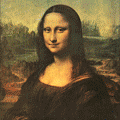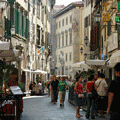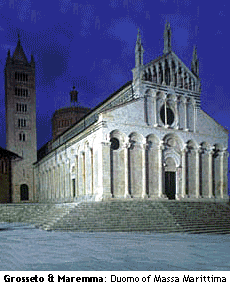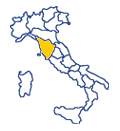
Grosseto & Maremma Hotels

Reserve Grosseto & Maremma Hotels: save up 70% on rooms!
Compare offers & book on line at hotel's web sites. |
|

|
|
Grosseto & Maremma Guide Italy
Churches palaces and monuments
|
|
|
|
|
Churches palaces and monuments
GROSSETO
The Maremma's provincial capital sits on a plain traced by the Ombrone river. Grosseto was originally surrounded by a marine gulf that, over the centuries, was transformed into a large lagoon.Although it was damaged by bombing during the 2nd World War, the city has a lovely old town center enclosed by its marvelous Hexagonal Walls. They were built by the Medici at the end of the 16th century from a design by Baldassarre Lanci; the Fortezza Medicea, the northeast bulwark of the walls, is a site of particular fascination consisting of tunnels, magazines and gatehouses.
The Duomo is the city's most interesting monument even though its many renovations have removed much of its primitive splendor. While the north side remained unfinished, the façade and south city feature bands of white and red stone. The interior is in the shape of a Latin cross divided into three naves by strong pillars. In the second bay on the left, you will note a lovely octagonal baptismal font from 1470 with very elaborate work.
Museo Archeologico e d’Arte della Maremma The archeological and art museum is housed in the former courthouse. The museum has a collection of 5,000 prehistoric, Etruscan and Roman relics. It is organized into 5 sections and presents the vicissitudes of the Etruscan city of Roselle in chronological order. One section is dedicated to the archeology of the province of Grosseto, excluding Roselle, from prehistory to late antiquity.
Roselle Archeological Area: ruins of the Etruscan, Roman and Medieval cities. It was located on a plateau that allowed controlling the present plain of Grosseto, which in ancient times was occupied by the ancient lagoon system that formed a large saltwater lake deep enough to be navigable. You can see the stratified remains of the Etruscan-Roman city: the city wall, remains of Etruscan houses and the Imperial age complex, with forum, stone streets and a well-preserved amphitheater. Visiting hours: from 09:00 to sunset.
THE MAREMMA
MASSA MARITTIMA is located in lovely position on a hill. Called the “Jewel of the Middle Ages” due to the beauty of its Romanesque and Gothic buildings, it is a monumental city where everything has remained in the harmonious proportions of past centuries. The city has always derived its wealth from copper and silver mines, agriculture and crafts and, in recent years, from tourism.
The Piazza del Duomo is striking: here, due to the positioning of the buildings, the architectures of the religious power and that of the lay authorities seem to avoid rather than confront each other. The Cathedral, located at the top of a flight of stairs, is in an asymmetric position with respect to the piazza. All this gives it a very dynamic appearance compared to the surrounding space. The cathedral was enriched over the centuries to the extent that what we see today is the sum of different styles, from Lombard to Romanesque and Gothic. The façade has recently been restored and returned to its original splendor. The inside is imposing in its naked simplicity. There are the remains of frescoes from the end of the 13th century and there are several 11th-century Lombard frescoes in the interior façade. There is an imposing Baptistery, closed by an iron gate, which consists of a Travertine basin from 1267 and a marble tabernacle that was added later.
The piazza contains several medieval palazzi, including the centers of the civil power of the time: facing the Duomo, there is the Palazzo del Podestà that was built around 1225 to house the family that ruled the city in the middle ages. On the other side of the piazza is the Palazzo Comunale, formed from the fusion of three house-towers constructed in different periods. Climbing Via Mancini, one comes to the Fortezza dei Senesi, joined to the Torre del Candeliere by an arched bridge. The fortress is a splendid example of medieval architecture and was built by the Sienese conquerors to physically separate the three parts of the city (terzieri) and prevent the residents from rising up against them.
Museo della Miniera: the mining sector, which today is in decline, was the backbone of the local economy for decades. The Mining Museum is housed in a system of subterranean tunnels that were used as an air-raid shelter during the war. In about 700 m of tunnels, the museum recreates the various systems for reinforcing and excavating the deposits. There is a display of mining machinery and a small collection of local minerals.
MAGLIANO This small town has a medieval appearance and a fortified center that is one of the most enchanting of the Maremma. During the Middle Ages, it was a dominion of the Republic of Siena, which fortified it with a mighty wall, which is still well-preserved today. Visitors are astonished by the imposing and elegant architecture of Magliano's wall. The walls on the southeast side are the oldest, constructed by the Aldobrandeschi counts in 1300. The western walls were constructed by the Republic of Siena in 1400, with semi-circular rather than square towers, and many other strategic novelties. The southwest walls, overlooking the sea, are the best preserved. The walls preserve the very suggestive ancient nucleus of the town. The two churches of San Giovanni Battista and the Santissima Annunziata are worth visiting for the many works of art they preserve inside. In particular, in the second church you can see the valuable painting, “La Madonna che allatta il Bambino” (Madonna Nursing the Child) by Bartolomeo di Lando.
CAPALBIO A land of brigands and wild boar, Capalbio is a splendid medieval town that rises on a wooded hill covered with typical Maremma thatch. The view from the town is astonishing and embraces the entire Maremma from the plain to the coastal pine forests and the silver sea. The atmosphere of the village's narrow streets is unique and has made Capalbio a summer resort destination for Italy's cultural, political and economic elite.
During the Middle Ages, it was first a possession of the Aldobrandeschi family, passed to the Orsini counts and, in 1416, was annexed to the Republic of Siena. The territory was later assigned to the Medici of Florence and began a slow and inexorable decline. In the 19th century, the town was home to bandits that terrorized the Maremma for many years and the most famous was the brigand Tiburzi, whose legend has survived to our own days.
The town, dominated by the Rocca Aldobrandesca, preserves its medieval plan almost intact, to the extent that you can follow the entire ancient "camino di ronda" (patrols path) along the walls. The Pieve di San Nicola, with its splendid Romanesque capitals and frescoes from the Siena school, is also worth a visit. Finally, we recommend a visit to the fascinating “Giardino dei Tarocchi” (Tarot Garden) created by the great Franco-American artist, Niki de Saint Phalle. The garden is located in the hamlet of Garavicchio and can be visited from May to the end of October.
Every year, Capalbio is the site of Capalbio Cinema the International Short Film Festival.
ORBETELLO Is a very special town on a thin tongue of land that extends into the lagoon that gave it its name. The city has a singular hull shape which is surrounded by the homonymous lagoon and joined to the Monte Argentario promontory by a dam built in 1841.
Orbetello was already inhabited in the Etruscan period and was later dominated by the Roman Empire. In the past, its favorable geographic position made it an attractive conquest, not only by noble Italian families, but also by foreign states. From 1555 to 1707, it was occupied by the Spanish, who proclaimed it the capital of the “Stato dei Presidi” and constructed mighty fortifications there.
The old town center is surrounded by about 2 kilometers of Etruscan walls. The walls probably date from the 5th century BC and are formed from large masses of polygonal shapes, set in place without mortar. Inside the walls, the ancient Cattedrale di Santa Maria Assunta rises in Piazza del Duomo, with a Tuscan Gothic façade. Taking a walk through the center, you can see the Palazzo del Governatore, alongside the Torre dell'Orologio and the monument to Garibaldi. In the 17th century, the Spanish built fortifications like the Polveriera Guzman, a large powder storehouse that contained tons of explosives and that, today, houses the city's archeological museum.
The area around Orbetello contains a wealth of interesting places such as the port of Talamone, a picturesque fishing village built around an ancient 15th-century fortress that provides a charming panoramic view of the coast and islands.
Pitigliano, Sovana, Sorano: see Saturnia and the Tufa Towns
Photos courtesy of: Agenzia Turismo della Maremma & Municipality of Grosseto
Go to directories of the Web Sites
|
|
|
|
|
Acquista la tua visibilità su Travel Plan
|
|
|
|





